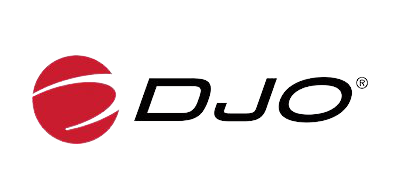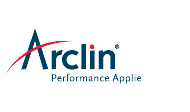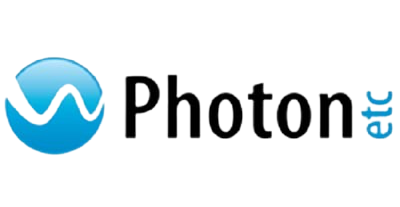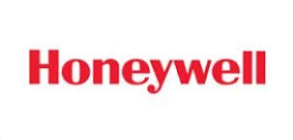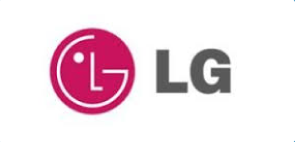Report Summary
Summary
An energy drink is a type of drink containing stimulant drugs, usually including caffeine, which is marketed as providing mental and physical stimulation (marketed as "energy", but distinct from food energy).
Energy drinks dominated the market during 2017, with a market share of 68%. The report predicts this segment to retain its leadership until the end of 2027.
The global Sports and Energy Drinks market was xx million US$ in 2020 and is expected to xx million US$ by the end of 2027, growing at a CAGR of xx% between 2021 and 2027.
This report studies the Sports and Energy Drinks market size (value and volume) by players, regions, product types and end industries, history data 2017-2020 and forecast data 2021-2027; This report also studies the global market competition landscape, market drivers and trends, opportunities and challenges, risks and entry barriers, sales channels, distributors and Porter's Five Forces Analysis.
Geographically, this report is segmented into several key regions, with sales, revenue, market share and growth Rate of Sports and Energy Drinks in these regions, from 2017 to 2027, covering
North America (United States, Canada and Mexico)
Europe (Germany, UK, France, Italy, Russia and Turkey etc.)
Asia-Pacific (China, Japan, Korea, India, Australia, Indonesia, Thailand, Philippines, Malaysia and Vietnam)
South America (Brazil etc.)
Middle East and Africa (Egypt and GCC Countries)
The various contributors involved in the value chain of the product include manufacturers, suppliers, distributors, intermediaries, and customers. The key manufacturers in this market include
Red Bull GmbH (CN)
Taisho Pharmaceutical Co Ltd. (JP)
PepsiCo (US)
Monster Energy (US)
Rockstar (US)
Lucozade (JP)
Coco Cola (US)
Amway (US)
Arizona Beverages (US)
Living Essentials LLC (US)
Xyience Energy (US)
Abbott Nutrition Inc (US)
By the product type, the market is primarily split into
Energy Drinks
Sports Drinks
By the end users/application, this report covers the following segments
Athletes
Sports and Fitness Enthusiasts
Other
We can also provide the customized separate regional or country-level reports, for the following regions:
North America
United States
Canada
Mexico
Asia-Pacific
China
India
Japan
South Korea
Australia
Indonesia
Singapore
Malaysia
Philippines
Thailand
Vietnam
Rest of Asia-Pacific
Europe
Germany
France
UK
Italy
Spain
Russia
Rest of Europe
Central & South America
Brazil
Rest of Central & South America
Middle East & Africa
GCC Countries
Turkey
Egypt
South Africa
Rest of Middle East & Africa
The study objectives of this report are:
To study and analyze the global Sports and Energy Drinks market size (value & volume) by company, key regions/countries, products and application, history data from 2017 to 2020, and forecast to 2027.
To understand the structure of Sports and Energy Drinks market by identifying its various subsegments.
To share detailed information about the key factors influencing the growth of the market (growth potential, opportunities, drivers, industry-specific challenges and risks).
Focuses on the key global Sports and Energy Drinks manufacturers, to define, describe and analyze the sales volume, value, market share, market competition landscape, SWOT analysis and development plans in next few years.
To analyze the Sports and Energy Drinks with respect to individual growth trends, future prospects, and their contribution to the total market.
To project the value and volume of Sports and Energy Drinks submarkets, with respect to key regions (along with their respective key countries).
To analyze competitive developments such as expansions, agreements, new product launches, and acquisitions in the market.
To strategically profile the key players and comprehensively analyze their growth strategies.
In this study, the years considered to estimate the market size of Sports and Energy Drinks are as follows:
History Year: 2017-2020
Base Year: 2020
Estimated Year: 2020
Forecast Year 2021 to 2027
This report includes the estimation of market size for value (million USD) and volume (K MT). Both top-down and bottom-up approaches have been used to estimate and validate the market size of Sports and Energy Drinks market, to estimate the size of various other dependent submarkets in the overall market. Key players in the market have been identified through secondary research, and their market shares have been determined through primary and secondary research. All percentage shares, splits, and breakdowns have been determined using secondary sources and verified primary sources.
For the data information by region, company, type and application, 2020 is considered as the base year. Whenever data information was unavailable for the base year, the prior year has been considered.
Key Stakeholders
Raw material suppliers
Distributors/traders/wholesalers/suppliers
Regulatory bodies, including government agencies and NGO
Commercial research & development (R&D) institutions
Importers and exporters
Government organizations, research organizations, and consulting firms
Trade associations and industry bodies
End-use industries
Available Customizations
With the given market data, EternityInsights offers customizations according to the company's specific needs. The following customization options are available for the report:
Further breakdown of Sports and Energy Drinks market on basis of the key contributing countries.
Detailed analysis and profiling of additional market players.
Table Of Contents
Table of Contents
1 Sports and Energy Drinks Market Overview
1.1 Sports and Energy Drinks Product Overview
1.2 Sports and Energy Drinks Market Segment by Type
1.2.1 Energy Drinks
1.2.2 Sports Drinks
1.3 Global Sports and Energy Drinks Market Size by Type
1.3.1 Global Sports and Energy Drinks Sales and Growth by Type
1.3.2 Global Sports and Energy Drinks Sales and Market Share by Type (2017-2020)
1.3.3 Global Sports and Energy Drinks Revenue and Market Share by Type (2017-2020)
1.3.4 Global Sports and Energy Drinks Price by Type (2017-2020)
2 Global Sports and Energy Drinks Market Competition by Company
2.1 Global Sports and Energy Drinks Sales and Market Share by Company (2017-2020)
2.2 Global Sports and Energy Drinks Revenue and Share by Company (2017-2020)
2.3 Global Sports and Energy Drinks Price by Company (2017-2020)
2.4 Global Top Players Sports and Energy Drinks Manufacturing Base Distribution, Sales Area, Product Types
2.5 Sports and Energy Drinks Market Competitive Situation and Trends
2.5.1 Sports and Energy Drinks Market Concentration Rate
2.5.2 Global Sports and Energy Drinks Market Share of Top 5 and Top 10 Players
2.5.3 Mergers & Acquisitions, Expansion
3 Sports and Energy Drinks Company Profiles and Sales Data
3.1 Red Bull GmbH (CN)
3.1.1 Company Basic Information, Manufacturing Base and Competitors
3.1.2 Sports and Energy Drinks Product Category, Application and Specification
3.1.3 Red Bull GmbH (CN) Sports and Energy Drinks Sales, Revenue, Price and Gross Margin(2017-2020)
3.1.4 Main Business Overview
3.2 Taisho Pharmaceutical Co Ltd. (JP)
3.2.1 Company Basic Information, Manufacturing Base and Competitors
3.2.2 Sports and Energy Drinks Product Category, Application and Specification
3.2.3 Taisho Pharmaceutical Co Ltd. (JP) Sports and Energy Drinks Sales, Revenue, Price and Gross Margin(2017-2020)
3.2.4 Main Business Overview
3.3 PepsiCo (US)
3.3.1 Company Basic Information, Manufacturing Base and Competitors
3.3.2 Sports and Energy Drinks Product Category, Application and Specification
3.3.3 PepsiCo (US) Sports and Energy Drinks Sales, Revenue, Price and Gross Margin(2017-2020)
3.3.4 Main Business Overview
3.4 Monster Energy (US)
3.4.1 Company Basic Information, Manufacturing Base and Competitors
3.4.2 Sports and Energy Drinks Product Category, Application and Specification
3.4.3 Monster Energy (US) Sports and Energy Drinks Sales, Revenue, Price and Gross Margin(2017-2020)
3.4.4 Main Business Overview
3.5 Rockstar (US)
3.5.1 Company Basic Information, Manufacturing Base and Competitors
3.5.2 Sports and Energy Drinks Product Category, Application and Specification
3.5.3 Rockstar (US) Sports and Energy Drinks Sales, Revenue, Price and Gross Margin(2017-2020)
3.5.4 Main Business Overview
3.6 Lucozade (JP)
3.6.1 Company Basic Information, Manufacturing Base and Competitors
3.6.2 Sports and Energy Drinks Product Category, Application and Specification
3.6.3 Lucozade (JP) Sports and Energy Drinks Sales, Revenue, Price and Gross Margin(2017-2020)
3.6.4 Main Business Overview
3.7 Coco Cola (US)
3.7.1 Company Basic Information, Manufacturing Base and Competitors
3.7.2 Sports and Energy Drinks Product Category, Application and Specification
3.7.3 Coco Cola (US) Sports and Energy Drinks Sales, Revenue, Price and Gross Margin(2017-2020)
3.7.4 Main Business Overview
3.8 Amway (US)
3.8.1 Company Basic Information, Manufacturing Base and Competitors
3.8.2 Sports and Energy Drinks Product Category, Application and Specification
3.8.3 Amway (US) Sports and Energy Drinks Sales, Revenue, Price and Gross Margin(2017-2020)
3.8.4 Main Business Overview
3.9 Arizona Beverages (US)
3.9.1 Company Basic Information, Manufacturing Base and Competitors
3.9.2 Sports and Energy Drinks Product Category, Application and Specification
3.9.3 Arizona Beverages (US) Sports and Energy Drinks Sales, Revenue, Price and Gross Margin(2017-2020)
3.9.4 Main Business Overview
3.10 Living Essentials LLC (US)
3.10.1 Company Basic Information, Manufacturing Base and Competitors
3.10.2 Sports and Energy Drinks Product Category, Application and Specification
3.10.3 Living Essentials LLC (US) Sports and Energy Drinks Sales, Revenue, Price and Gross Margin(2017-2020)
3.10.4 Main Business Overview
3.11 Xyience Energy (US)
3.12 Abbott Nutrition Inc (US)
4 Sports and Energy Drinks Market Status and Outlook by Regions
4.1 Global Market Status and Outlook by Regions
4.1.1 Global Sports and Energy Drinks Market Size and CAGR by Regions
4.1.2 North America
4.1.3 Asia-Pacific
4.1.4 Europe
4.1.5 South America
4.1.6 Middle East and Africa
4.2 Global Sports and Energy Drinks Sales and Revenue by Regions
4.2.1 Global Sports and Energy Drinks Sales and Market Share by Regions (2017-2020)
4.2.2 Global Sports and Energy Drinks Revenue and Market Share by Regions (2017-2020)
4.2.3 Global Sports and Energy Drinks Sales, Revenue, Price and Gross Margin (2017-2020)
4.3 North America Sports and Energy Drinks Sales, Revenue, Price and Gross Margin
4.3.1 United States
4.3.2 Canada
4.3.3 Mexico
4.4 Europe Sports and Energy Drinks Sales, Revenue, Price and Gross Margin
4.4.1 Germany
4.4.2 UK
4.4.3 France
4.4.4 Italy
4.4.5 Russia
4.4.6 Turkey
4.5 Asia-Pacific Sports and Energy Drinks Sales, Revenue, Price and Gross Margin
4.5.1 China
4.5.2 Japan
4.5.3 Korea
4.5.4 Southeast Asia
4.5.4.1 Indonesia
4.5.4.2 Thailand
4.5.4.3 Malaysia
4.5.4.4 Philippines
4.5.4.5 Vietnam
4.5.5 India
4.5.6 Australia
4.6 South America Sports and Energy Drinks Sales, Revenue, Price and Gross Margin
4.6.1 Brazil
4.7 Middle East and Africa Sports and Energy Drinks Sales, Revenue, Price and Gross Margin
4.7.1 Egypt
4.7.2 GCC Countries
5 Sports and Energy Drinks Application/End Users
5.1 Sports and Energy Drinks Segment by Application
5.1.1 Athletes
5.1.2 Sports and Fitness Enthusiasts
5.1.3 Other
5.2 Global Sports and Energy Drinks Product Segment by Application
5.2.1 Global Sports and Energy Drinks Sales by Application
5.2.2 Global Sports and Energy Drinks Sales and Market Share by Application (2017-2020)
6 Global Sports and Energy Drinks Market Forecast
6.1 Global Sports and Energy Drinks Sales, Revenue Forecast (2021-2027)
6.1.1 Global Sports and Energy Drinks Sales and Growth Rate Forecast (2021-2027)
6.1.1 Global Sports and Energy Drinks Revenue and Growth Rate Forecast (2021-2027)
6.2 Global Sports and Energy Drinks Forecast by Regions
6.2.1 North America Sports and Energy Drinks Sales and Revenue Forecast (2021-2027)
6.2.2 Europe Sports and Energy Drinks Sales and Revenue Forecast (2021-2027)
6.2.3 Asia-Pacific Sports and Energy Drinks Sales and Revenue Forecast (2021-2027)
6.2.3.1 China
6.2.3.2 Japan
6.2.3.3 Korea
6.2.3.4 Southeast Asia
6.2.3.5 India
6.2.3.6 Australia
6.2.4 South America Sports and Energy Drinks Sales and Revenue Forecast (2021-2027)
6.2.5 Middle East and Africa Sports and Energy Drinks Sales and Revenue Forecast (2021-2027)
6.2.5.1 Egypt
6.2.5.2 GCC Countries
6.3 Sports and Energy Drinks Forecast by Type
6.3.1 Global Sports and Energy Drinks Sales and Revenue Forecast by Type (2021-2027)
6.3.2 Energy Drinks Gowth Forecast
6.3.3 Sports Drinks Gowth Forecast
6.4 Sports and Energy Drinks Forecast by Application
6.4.1 Global Sports and Energy Drinks Sales Forecast by Application (2021-2027)
6.4.2 Global Sports and Energy Drinks Forecast in Athletes
6.4.3 Global Sports and Energy Drinks Forecast in Sports and Fitness Enthusiasts
7 Sports and Energy Drinks Upstream Raw Materials
7.1 Sports and Energy Drinks Key Raw Materials
7.1.1 Key Raw Materials
7.1.2 Key Raw Materials Price
7.1.3 Raw Materials Key Suppliers
7.2 Manufacturing Cost Structure
7.2.1 Raw Materials
7.2.2 Labor Cost
7.2.3 Manufacturing Expenses
7.3 Sports and Energy Drinks Industrial Chain Analysis
8 Marketing Strategy Analysis, Distributors
8.1 Marketing Channel
8.1.1 Direct Marketing
8.1.2 Indirect Marketing
8.1.3 Marketing Channel Development Trend
8.2 Distributors
8.3 Downstream Customers
9 Research Findings and Conclusion
Appendix
Methodology/Research Approach
Research Programs/Design
Market Size Estimation
Market Breakdown and Data Triangulation
Data Source
Secondary Sources
Primary Sources
Disclaimer





